Does Recycling Actually Contribute to Lowering Pollution Levels?
In today's world, where environmental concerns are at the forefront of global discussions, the question of whether recycling truly helps in reducing pollution levels is more relevant than ever. Many people often wonder if their efforts to recycle are making a difference or if it's just a drop in the ocean. The truth is, recycling plays a crucial role in minimizing waste, conserving resources, and ultimately promoting environmental sustainability. When we recycle, we are not just tossing our plastic bottles and paper into a bin; we are engaging in a process that has far-reaching implications for our planet.
Recycling is more than just a trendy buzzword; it’s a lifeline for our environment. Every time we recycle, we are preventing pollution that would otherwise result from the extraction and processing of raw materials. For instance, when we recycle paper, we save trees, which in turn helps maintain biodiversity and reduces carbon emissions. Similarly, recycling metals reduces the need for mining, which is a process that can lead to significant land degradation and water pollution. In essence, recycling acts as a buffer against the rampant pollution caused by traditional manufacturing processes.
But how does this all work? The recycling process involves collecting materials, sorting them, and then processing them into new products. This cycle not only diverts waste from landfills but also significantly lowers the amount of energy required to produce new materials. For example, recycling aluminum saves up to 95% of the energy needed to create aluminum from raw ore. This energy savings translates into lower greenhouse gas emissions, which is a critical factor in fighting climate change.
Moreover, recycling can create a ripple effect. When communities embrace recycling programs, they often see a reduction in litter and pollution in their neighborhoods. Cleaner environments lead to healthier populations, which is a win-win situation. But it’s not just about the immediate benefits; recycling fosters a culture of sustainability that encourages individuals and businesses to think critically about their consumption patterns and waste management practices.
In conclusion, recycling does indeed contribute to lowering pollution levels. It’s a powerful tool that, if utilized effectively, can lead to substantial environmental benefits. However, the effectiveness of recycling depends on public participation and awareness. As we continue to educate ourselves and others about the importance of recycling, we can collectively make a significant impact on our planet's health.
- What materials can be recycled? Most common recyclable materials include plastics, metals, paper, and glass.
- How does recycling reduce pollution? Recycling reduces the need for new raw materials, which in turn decreases energy consumption and lowers emissions from manufacturing processes.
- Is recycling worth the effort? Absolutely! Recycling conserves resources, reduces landfill waste, and helps protect the environment.
- What are the economic benefits of recycling? Recycling can create jobs, reduce waste management costs, and stimulate local economies.

The Science Behind Recycling
Recycling is not just a trendy buzzword; it’s a vital process that plays a crucial role in conserving our planet's resources and reducing pollution. But how does it really work? To understand the science behind recycling, we need to look at the lifecycle of materials and how they are transformed through various processes. When we recycle, we are essentially giving a second life to materials that would otherwise end up in landfills. This transformation involves several stages, including collection, sorting, processing, and manufacturing new products.
At the heart of recycling is the principle of resource recovery. When we recycle, we save energy and reduce the need for raw materials. For instance, recycling aluminum saves up to 95% of the energy required to produce new aluminum from bauxite ore. Imagine if we could power our homes with the energy we save from recycling just a few cans! The environmental implications are significant, as this energy savings translates to fewer greenhouse gas emissions.
Moreover, the recycling process itself varies depending on the material being recycled. For example, plastic recycling typically involves several steps, including shredding the plastic into small pieces, washing to remove contaminants, and then melting it down to form new products. This process not only reduces pollution but also conserves the resources needed for producing new plastic. The table below summarizes the recycling processes for different materials:
| Material | Recycling Process | Energy Savings |
|---|---|---|
| Aluminum | Shredding, melting, and reforming | 95% |
| Plastic | Shredding, washing, melting | 70% |
| Paper | Shredding, pulping, and drying | 60% |
In addition to conserving energy, recycling also significantly reduces pollution. By diverting waste from landfills, we decrease the amount of methane—a potent greenhouse gas—produced during decomposition. Furthermore, recycling materials often requires less energy than extracting and processing raw materials, leading to lower emissions of harmful pollutants into the atmosphere.
So, why should we care about the science behind recycling? Because it empowers us to make informed choices. Each time we choose to recycle, we are actively participating in a cycle that benefits not just our environment but also our economy. It’s a win-win situation! As we delve deeper into the various recyclable materials, we will uncover how each contributes uniquely to lowering pollution levels and promoting a sustainable future.
- What materials can be recycled? Most common recyclable materials include plastics, metals, paper, and glass.
- How does recycling reduce pollution? Recycling saves energy and reduces the need for new raw materials, leading to fewer emissions and less waste.
- Is recycling always effective? While recycling has many benefits, contamination and market demand can affect its effectiveness.
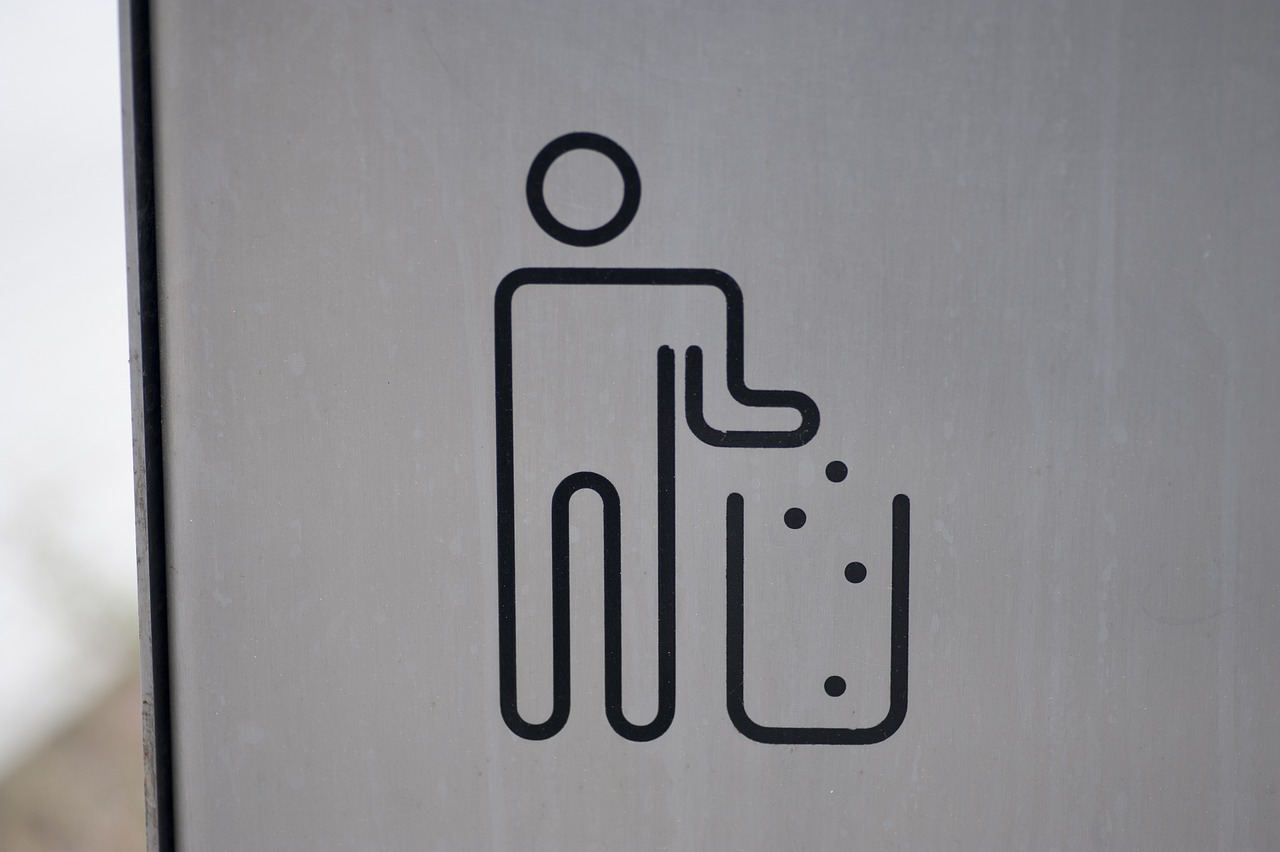
Types of Recyclable Materials
When it comes to recycling, not all materials are created equal. Each type of recyclable material has its own unique properties and processes that contribute to reducing pollution and conserving resources. Understanding these materials is crucial for anyone looking to make a positive environmental impact. Let's dive into the common recyclable items and see how they play a role in our quest for a cleaner planet.
One of the most widely recognized recyclable materials is plastic. Plastics can be found in everything from packaging to household items. However, the recycling process for plastics can be complicated due to the numerous types available, each requiring different handling methods. For instance, PET (Polyethylene Terephthalate) is commonly recycled into new containers, while HDPE (High-Density Polyethylene) can be transformed into piping or plastic lumber. The ability to recycle these materials effectively can significantly cut down on pollution associated with new plastic production.
Another major recyclable category is metals. Items like aluminum cans and steel products are not just recyclable; they are often recycled multiple times without losing their quality. Recycling metals conserves natural resources and reduces the need for mining, which is a process that can lead to significant environmental degradation. For example, recycling one ton of aluminum saves about 14,000 kWh of energy, which is enough to power an average household for over a year!
Paper is another important recyclable material that contributes to pollution reduction. When recycled, paper products can be transformed into new paper, reducing the need for virgin timber and decreasing the amount of waste sent to landfills. A fascinating fact is that recycling just one ton of paper can save 17 trees, 7,000 gallons of water, and 4,100 kilowatts of electricity. It’s like a triple win for the environment!
| Material Type | Recycling Process | Environmental Impact |
|---|---|---|
| Plastic | Sorted, cleaned, and processed into new products | Reduces landfill waste and conserves fossil fuels |
| Metals | Shredded, melted, and reformed | Conserves natural resources and energy |
| Paper | Pulped and reprocessed into new paper products | Saves trees and reduces water usage |
Additionally, glass is a highly recyclable material that can be recycled endlessly without losing quality. Glass recycling involves collecting, cleaning, and melting down used glass to create new products. This process not only reduces pollution but also saves energy, as it takes less energy to recycle glass than to produce new glass from raw materials.
Lastly, there are e-waste materials like old electronics that can be recycled to recover valuable metals and components. However, e-waste recycling is often overlooked, despite its potential to reduce hazardous waste and recover precious resources. It’s essential to handle e-waste responsibly to prevent harmful substances from leaching into the environment.
In conclusion, understanding the types of recyclable materials and their respective processes is essential for effective recycling. By being aware of what can and cannot be recycled, we can all contribute to lowering pollution levels and promoting sustainability. Remember, every small action counts, and by recycling the right materials, we can make a significant difference in our environment!
- What materials can be recycled? Most plastics, metals, paper, glass, and certain electronics can be recycled. Always check with your local recycling guidelines.
- How does recycling help reduce pollution? Recycling conserves resources, reduces the need for new material production, and minimizes waste in landfills, which can release harmful pollutants.
- Can all types of plastic be recycled? No, not all plastics are recyclable. It's essential to check the recycling symbols on plastic products.
- What happens to recycled materials? They are processed and transformed into new products, which helps reduce the demand for raw materials.
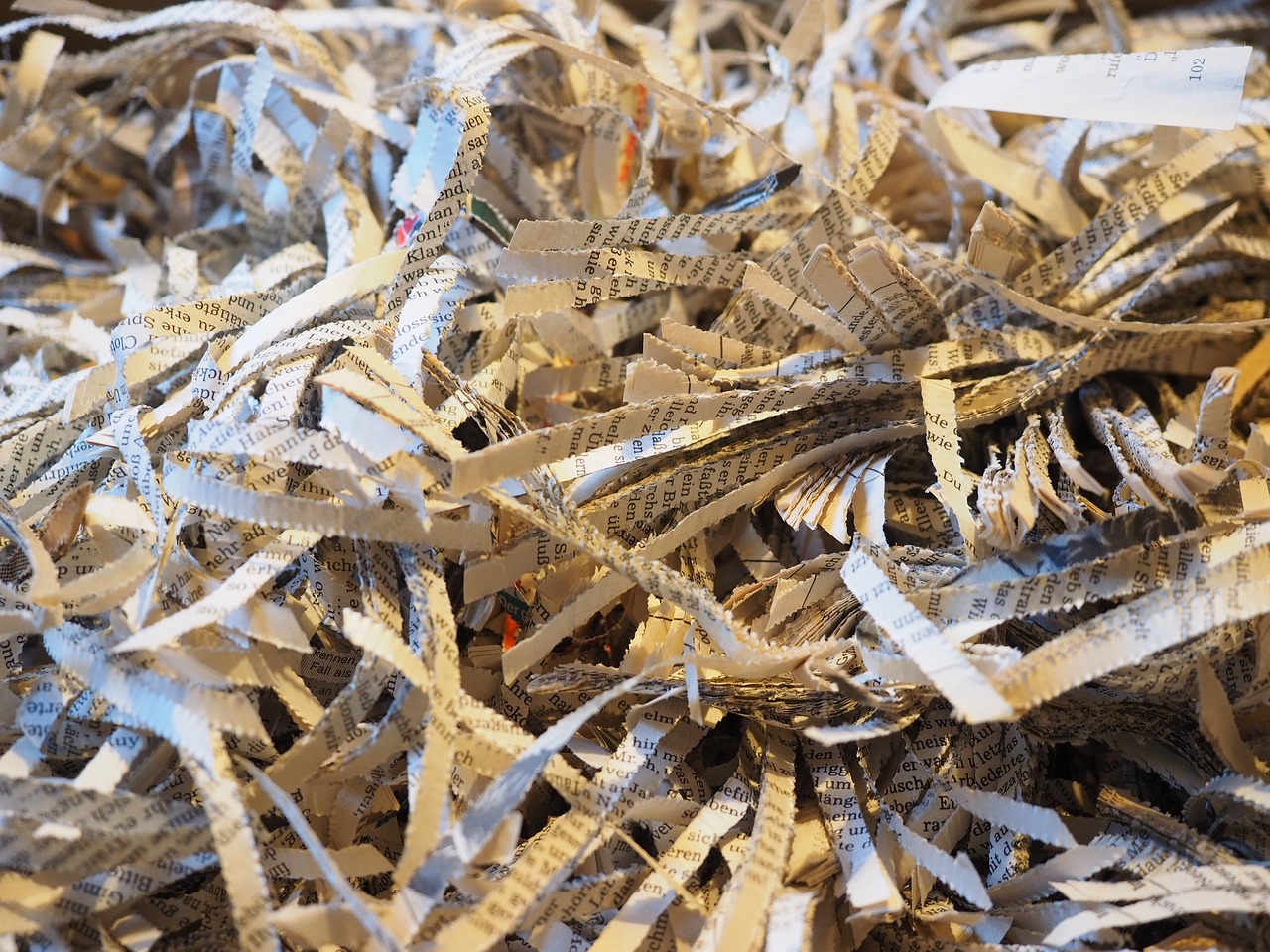
The Role of Plastic Recycling
Plastic waste has become a monumental challenge for our planet. With millions of tons of plastic ending up in landfills and oceans each year, the question arises: can plastic recycling truly make a difference? The answer is a resounding yes! Recycling plastic plays a pivotal role in mitigating pollution and conserving our precious resources. When we recycle plastic, we are not just giving a second life to materials; we are actively participating in a larger movement to protect our environment.
To understand the significance of plastic recycling, we must first recognize the environmental impact of plastic production. The process of creating new plastic is energy-intensive and often involves the extraction of fossil fuels, which contributes to greenhouse gas emissions. By recycling plastic, we reduce the demand for new plastic production, thereby decreasing energy consumption and lowering pollution levels. It's like turning off a leaky faucet—every drop saved counts!
Moreover, recycling plastic helps in reducing the volume of waste that ends up in landfills. Landfills are not just unsightly; they are also sources of harmful emissions, including methane, a potent greenhouse gas. When we recycle plastic, we divert it from these landfills, contributing to a cleaner and healthier environment. In fact, according to the Environmental Protection Agency (EPA), recycling and composting prevented the release of approximately 186 million metric tons of carbon dioxide equivalent into the air in 2013 alone.
But how does the recycling process work? When plastic items are collected, they are sorted, cleaned, and processed into pellets that can be used to create new products. This process not only saves energy but also conserves natural resources. For instance, recycling one ton of plastic can save approximately 7.4 cubic yards of landfill space and reduce greenhouse gas emissions by about 3,000 pounds. It's a win-win situation!
Despite the clear benefits, plastic recycling is not without its challenges. Contamination is one of the biggest hurdles faced in the recycling process. Items that are not properly cleaned or are made from different types of plastic can complicate recycling efforts. Additionally, the fluctuating market demand for recycled plastics can impact the effectiveness of recycling programs. However, innovations in technology are paving the way for more efficient recycling processes, making it easier to recycle various types of plastics.
In conclusion, the role of plastic recycling is crucial in our fight against pollution. By recycling plastic, we are not only reducing the amount of waste that ends up in our environment but also conserving valuable resources and lowering our carbon footprint. It's time to embrace recycling as a vital part of our daily lives. After all, every little bit helps in creating a cleaner, greener planet for future generations.
- What types of plastics can be recycled? Most curbside recycling programs accept #1 (PETE) and #2 (HDPE) plastics, but it's important to check local guidelines.
- How can I prepare my plastic for recycling? Rinse out containers to remove food residue, and flatten bottles to save space in recycling bins.
- Does recycling plastic really make a difference? Yes! Recycling reduces pollution, conserves resources, and decreases landfill waste.
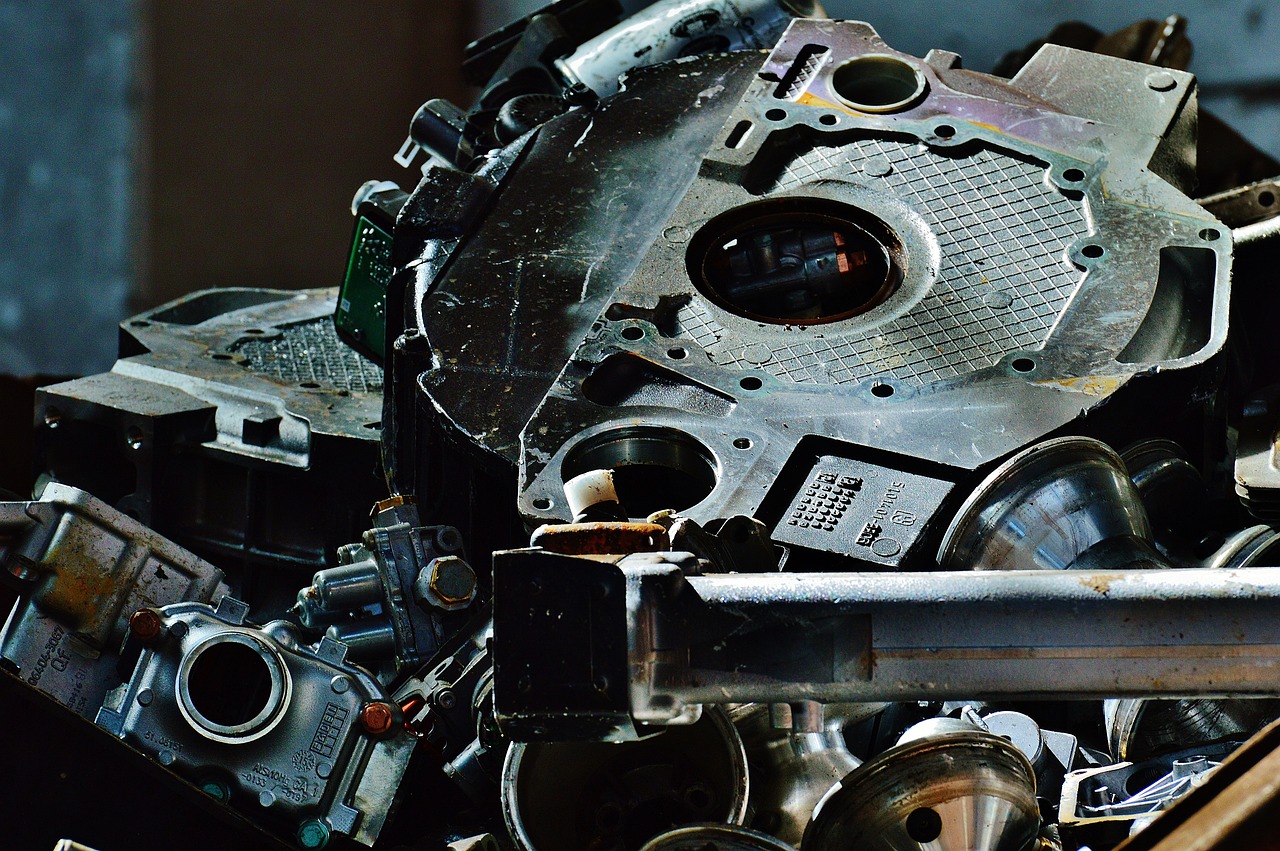
Challenges in Plastic Recycling
While recycling plastic is a noble endeavor aimed at reducing pollution and conserving resources, it is not without its challenges. One of the most significant obstacles is contamination. When recyclable plastics are mixed with non-recyclable materials, they can compromise the entire batch. Imagine trying to bake a cake but accidentally adding salt instead of sugar; the result is far from what you intended. Similarly, contaminated plastics can lead to rejected loads at recycling facilities, which not only wastes resources but also increases landfill waste.
Another challenge is the market demand for recycled materials. The recycling industry relies heavily on the ability to sell recycled plastics to manufacturers. However, if there is a lack of demand, it can result in a backlog of recycled materials. This situation is akin to having a store full of unsold products; eventually, the store has to clear out inventory, often leading to the disposal of perfectly good materials. Additionally, fluctuating oil prices can influence the cost of producing new plastics, making virgin plastic cheaper than recycled alternatives. This economic imbalance can discourage manufacturers from using recycled materials.
Moreover, the variety of plastics presents another hurdle. Not all plastics are created equal, and each type has its own recycling process. For instance, PET (polyethylene terephthalate) and HDPE (high-density polyethylene) are widely accepted in recycling programs, but other types like PVC (polyvinyl chloride) and polystyrene can be more challenging to recycle. This inconsistency can confuse consumers about what can and cannot be recycled, leading to increased contamination rates.
Furthermore, technological limitations also play a role in the effectiveness of plastic recycling. Many recycling facilities still use outdated equipment that may not efficiently process the diverse range of plastics. As a result, the recycling rates for certain types of plastics remain low. To address these issues, the industry is exploring innovative technologies that could streamline the recycling process, making it easier and more efficient to recycle various types of plastics.
In summary, while the potential benefits of plastic recycling are immense, these challenges must be addressed to enhance its effectiveness. By improving contamination rates, increasing market demand, standardizing recycling processes, and investing in new technologies, we can pave the way for a more sustainable future. It's a complex puzzle, but every piece counts in the fight against pollution.
- What types of plastics can be recycled? Most curbside recycling programs accept PET and HDPE, but it's essential to check local guidelines for other types.
- How does contamination affect recycling? Contaminated materials can lead to the rejection of entire batches, increasing waste and reducing recycling efficiency.
- What are some innovative technologies in plastic recycling? New technologies include advanced sorting systems and chemical recycling methods that can break down plastics into their original components.
- How can consumers help improve plastic recycling? By properly sorting recyclables, cleaning containers, and staying informed about local recycling rules, consumers can significantly reduce contamination.

Innovations in Plastic Recycling
As we dive into the world of plastic recycling innovations, it's important to recognize that the challenges associated with plastic waste are immense. However, the good news is that scientists and entrepreneurs are stepping up to the plate, developing groundbreaking technologies that promise to transform how we recycle plastic. Imagine a future where plastic waste is not just a burden, but a valuable resource that can be reused and repurposed efficiently. This is becoming a reality thanks to several innovative approaches.
One of the most exciting advancements is the emergence of chemical recycling. Unlike traditional mechanical recycling, which often degrades plastic quality, chemical recycling breaks down plastics into their original monomers. This process allows for the creation of new plastics that are just as good as virgin materials. For instance, companies like Loop Industries are pioneering this technology, turning waste PET plastic into high-quality resin without compromising its integrity. This method not only reduces pollution but also minimizes the need for new plastic production, which is notoriously energy-intensive.
Another remarkable innovation is the development of biodegradable plastics made from renewable resources. These materials are designed to break down more easily in the environment, significantly reducing the long-term impact of plastic waste. Brands like NatureWorks are leading the charge, creating Ingeo™ biopolymer from plant sugars, which can be used in a variety of applications, from packaging to disposable cutlery. While these materials still require proper disposal methods to ensure they decompose effectively, they represent a step forward in reducing plastic pollution.
Additionally, new sorting technologies are making it easier to separate recyclable plastics from non-recyclable waste. Advanced AI-powered sorting systems can identify and categorize different types of plastics with incredible accuracy, improving recycling rates and reducing contamination. For example, companies like AMP Robotics are utilizing artificial intelligence to streamline the sorting process, ensuring that more plastics are diverted from landfills and sent for recycling. This not only enhances the efficiency of recycling facilities but also helps to create a cleaner stream of recyclable materials.
Furthermore, the concept of upcycling has gained traction in recent years. Upcycling involves transforming waste materials into new products of higher quality or value. This not only reduces the amount of plastic waste but also promotes creativity and innovation. Artists and designers are now creating stunning pieces of art and functional products from discarded plastics, showing that waste can be reimagined into something beautiful and useful. For instance, brands like Parley for the Oceans are turning ocean plastic into fashionable apparel and accessories, raising awareness about plastic pollution while providing consumers with sustainable options.
In conclusion, the innovations in plastic recycling are not just about improving existing processes but also about rethinking our relationship with plastic. By embracing these advancements, we can significantly lower pollution levels and pave the way for a more sustainable future. The journey is ongoing, and as technology continues to evolve, so too will our ability to tackle the plastic waste crisis. Together, we can transform challenges into opportunities, creating a cleaner and greener planet for generations to come.
- What is chemical recycling? Chemical recycling is a process that breaks down plastics into their original monomers, allowing for the creation of new, high-quality plastics.
- How do biodegradable plastics work? Biodegradable plastics are designed to break down more easily in the environment, reducing long-term pollution, but they still require proper disposal methods.
- What role does AI play in recycling? AI-powered sorting systems enhance the efficiency of recycling facilities by accurately identifying and categorizing different types of plastics.
- What is upcycling? Upcycling is the process of transforming waste materials into new products of higher quality or value, promoting creativity and sustainability.
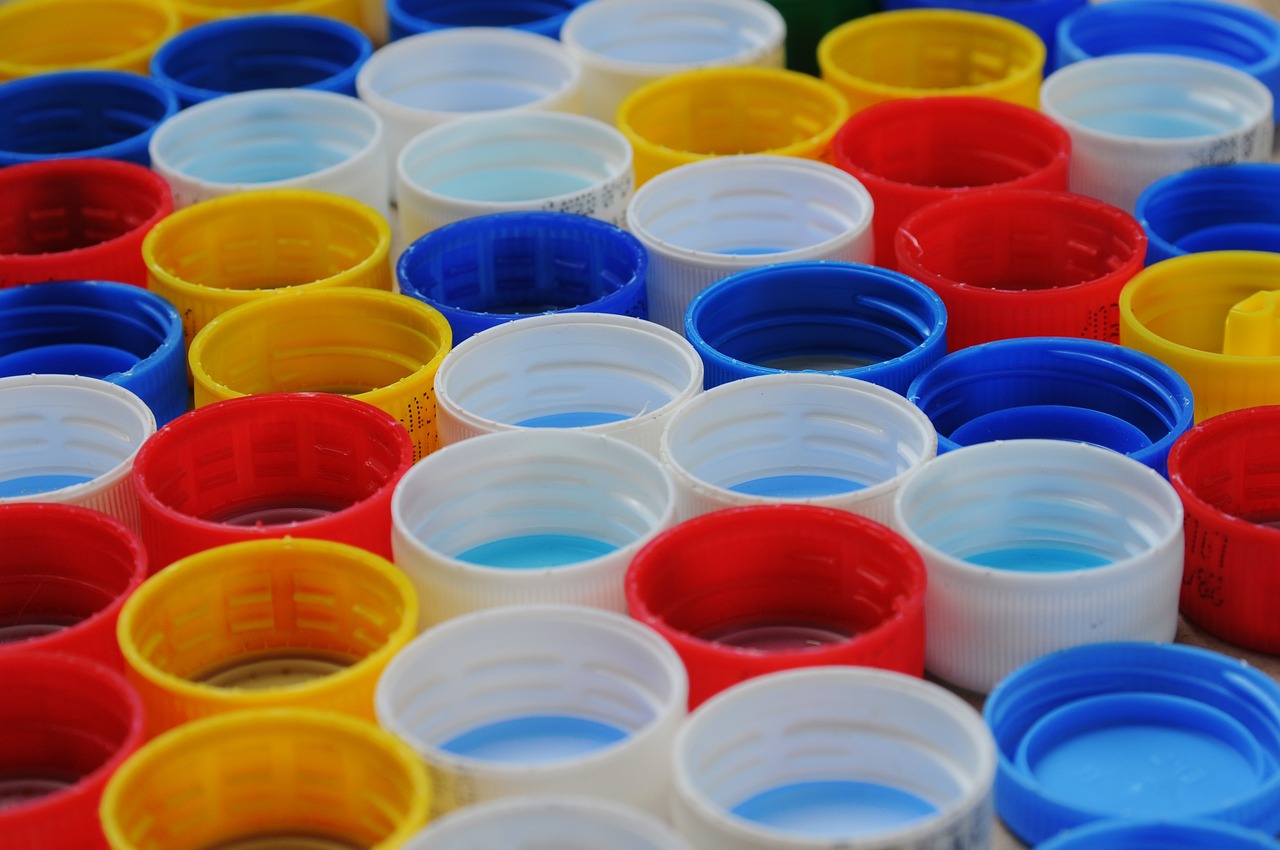
The Impact of Metal Recycling
When we think about recycling, we often picture paper and plastic, but metal recycling plays an equally crucial role in reducing pollution and conserving our planet's precious resources. Metals are not only abundant in our everyday lives, found in everything from cans to cars, but they are also infinitely recyclable. This means that once a metal product reaches the end of its life, it can be melted down and reshaped into a new product without losing any of its inherent properties. Imagine a world where the aluminum can you tossed in the recycling bin could become a brand-new airplane wing! That’s the power of metal recycling.
One of the biggest environmental benefits of recycling metals is the significant reduction in energy consumption. For instance, recycling aluminum saves up to 95% of the energy required to produce new aluminum from raw materials. This drastic energy savings translates directly into lower greenhouse gas emissions, helping to combat climate change. To put it into perspective, recycling just one ton of aluminum can prevent the release of about 9 tons of carbon dioxide into the atmosphere. Isn’t that astonishing?
Moreover, metal recycling contributes to the conservation of natural resources. Mining for new metals not only depletes our earth's resources but also leads to habitat destruction and increased pollution. By recycling metals, we reduce the need for mining and the associated environmental degradation. Here’s a quick look at the resources saved through metal recycling:
| Metal Type | Energy Savings (%) | Greenhouse Gas Emissions Saved (tons per ton recycled) |
|---|---|---|
| Aluminum | 95% | 9 |
| Steel | 74% | 1.5 |
| Copper | 85% | 2.5 |
As you can see from the table, the impact of recycling metals extends far beyond just keeping our landfills clear. It’s about creating a sustainable loop where precious resources are reused and repurposed, helping to maintain ecological balance. Additionally, the recycling industry generates jobs and stimulates local economies, further enhancing its positive impact on society.
However, it’s important to recognize that the effectiveness of metal recycling is contingent upon public participation and proper recycling practices. Contamination can severely hinder the recycling process, so it's essential to ensure that metals are clean and sorted correctly before being sent to recycling facilities. This is where community education and awareness become vital. By understanding the importance of recycling metals and how to do it properly, we can all contribute to a cleaner, healthier planet.
In conclusion, the impact of metal recycling is profound and multifaceted. From conserving energy and reducing emissions to preserving natural resources and creating job opportunities, recycling metals is a powerful tool in our fight against pollution. So next time you finish that soda can, remember that you're not just throwing it away; you're participating in a larger movement towards sustainability and environmental responsibility.
- Why is metal recycling important? Metal recycling is crucial because it conserves natural resources, saves energy, and reduces greenhouse gas emissions.
- What types of metals can be recycled? Commonly recycled metals include aluminum, steel, copper, and brass.
- How can I ensure my metal recycling is effective? Make sure to clean and sort your metal items properly before recycling to avoid contamination.
- What happens to recycled metals? Recycled metals are melted down and reformed into new products, which can be used in various industries.

Economic Benefits of Recycling
Recycling is often viewed through the lens of environmental benefits, but it also has significant economic advantages that are worth exploring. When we think about recycling, we might picture a simple act of tossing a plastic bottle into a bin, but the reality is much more complex and impactful. Recycling can be a goldmine for local economies, creating jobs, reducing waste management costs, and conserving valuable resources.
One of the most compelling economic benefits of recycling is the job creation it fosters. The recycling industry is a robust sector that generates a myriad of employment opportunities across various levels. From collection and sorting to processing and manufacturing, there are numerous roles available that cater to different skill sets. According to recent studies, the recycling industry has the potential to create over a million jobs in the United States alone. This includes roles in:
- Material recovery facilities
- Recycling centers
- Manufacturing companies that utilize recycled materials
- Research and development for innovative recycling technologies
Moreover, recycling not only creates jobs but also stimulates local economies. When communities invest in recycling programs, they often see a boost in local businesses that support these initiatives. For instance, the demand for recycled materials can lead to the establishment of new manufacturing plants that utilize these resources, which in turn creates more jobs and contributes to the local tax base. It’s a circular economy in action, where the benefits of recycling ripple through the community.
Another significant aspect of recycling is the cost savings it can provide. Communities that actively engage in recycling programs often experience lower waste disposal costs. By diverting materials from landfills, municipalities can save on tipping fees, which are charges levied by landfills for accepting waste. These savings can be substantial, especially for larger cities. For example, a city that recycles 30% of its waste could potentially save thousands of dollars each year in landfill fees. This money can then be reinvested into community services, infrastructure, or further sustainability initiatives.
Additionally, recycling conserves natural resources, which translates into economic benefits as well. When we recycle materials like paper, metals, and plastics, we reduce the need for virgin materials. This not only lessens the environmental impact associated with resource extraction but also stabilizes prices for these materials. For instance, recycling aluminum saves 90% of the energy required to produce new aluminum from ore. This energy savings can lead to lower production costs for manufacturers, which can be passed on to consumers in the form of lower prices.
In summary, the economic benefits of recycling are multifaceted and extend beyond mere environmental protection. By creating jobs, reducing costs, and conserving resources, recycling serves as a powerful tool for economic growth and sustainability. It’s a win-win situation: we help the planet while simultaneously boosting our local economies. As we continue to embrace recycling, we not only contribute to a cleaner environment but also pave the way for a more prosperous future.
1. How does recycling create jobs?
Recycling creates jobs through various stages, including collection, sorting, processing, and manufacturing. Each of these stages requires a workforce, thereby generating employment opportunities.
2. What are the cost savings associated with recycling?
Communities that recycle can save on landfill tipping fees and reduce waste management costs. These savings can be redirected towards community services and sustainability programs.
3. How does recycling affect local economies?
Recycling stimulates local economies by creating jobs, supporting local businesses, and increasing tax revenues. It fosters a circular economy where resources are reused, benefiting the entire community.
4. Can recycling help stabilize material prices?
Yes, recycling reduces the demand for virgin materials, which can help stabilize prices for these resources. This makes recycled materials more economically viable for manufacturers.
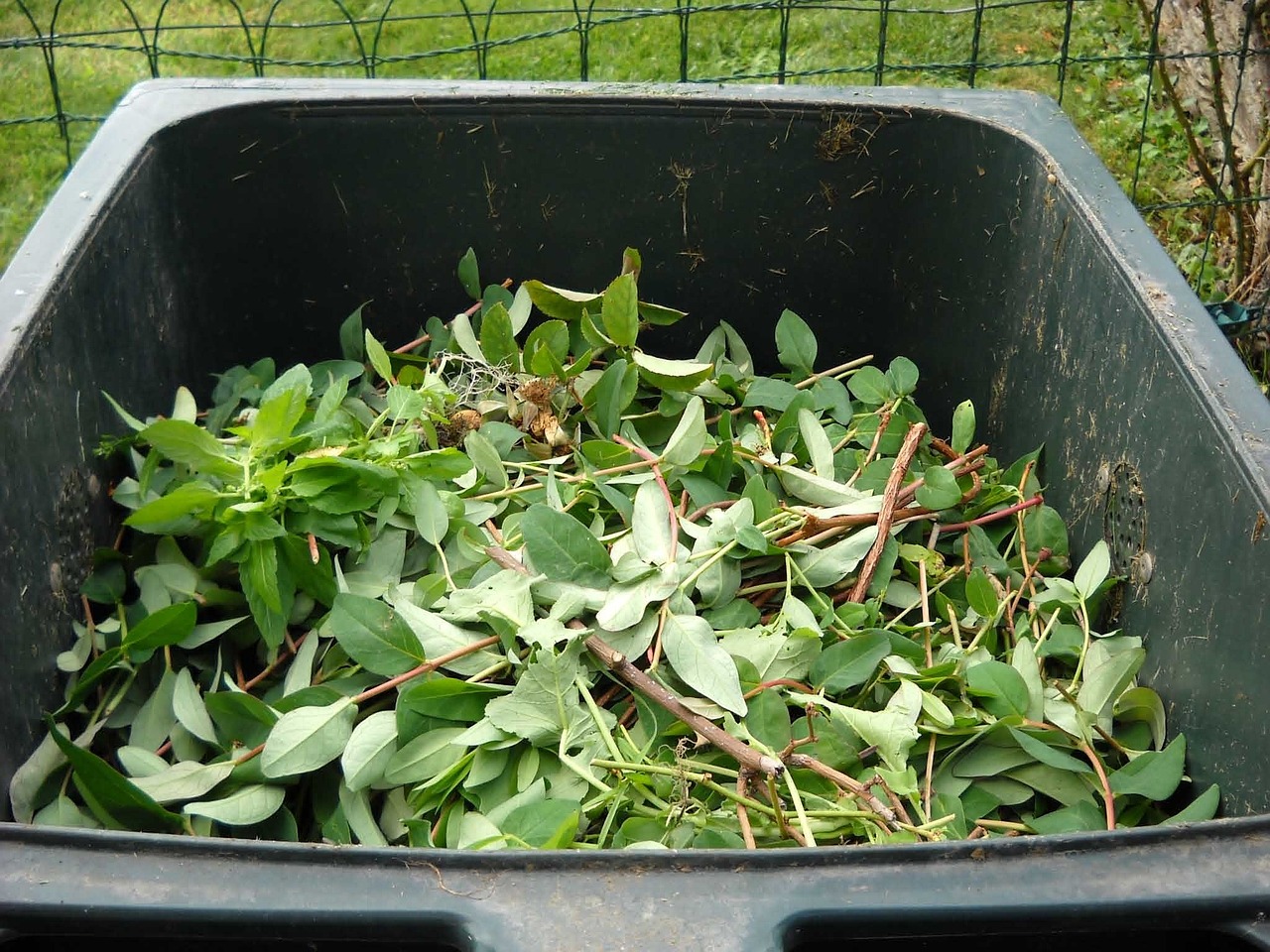
Job Creation in the Recycling Industry
The recycling industry is not just about reducing waste and conserving resources; it is also a significant driver of job creation. As communities and businesses recognize the importance of sustainable practices, the demand for recycling services has surged, leading to a wealth of employment opportunities. In fact, the recycling sector supports a wide range of jobs that span various skill levels and expertise. From collection and sorting to processing and sales, the recycling industry is a bustling hub of activity that contributes to the economy in multiple ways.
According to recent studies, the recycling industry has the potential to create over 1.17 million jobs in the United States alone. These jobs are not limited to traditional roles but extend into innovative fields such as environmental engineering and technology development. The diversity of positions available means that there is something for everyone, whether you're looking for a hands-on role or a career in management and logistics.
Some of the key job categories in the recycling industry include:
- Collection and Transportation: Workers in this area are responsible for collecting recyclable materials from homes, businesses, and industrial sites. These roles are crucial as they ensure that materials are efficiently gathered and transported to recycling facilities.
- Sorting and Processing: Once materials arrive at recycling centers, they need to be sorted and processed. This involves using machinery and manual labor to separate different types of recyclables, which is essential for effective recycling.
- Research and Development: With the rise of new technologies, there is a growing need for professionals who can develop innovative recycling methods and improve existing processes. This includes engineers, scientists, and environmental specialists.
- Sales and Marketing: As the recycling industry grows, so does the need for professionals who can promote recycling initiatives and educate the public about the benefits of recycling. These roles are vital for increasing participation and awareness.
Moreover, the economic ripple effect of job creation in the recycling industry can be quite profound. When jobs are created, local economies benefit from increased spending, which can lead to further job creation in other sectors. This cycle of growth not only helps individuals and families but also strengthens communities as a whole.
In conclusion, the recycling industry is a powerful force for job creation, offering a diverse array of opportunities that contribute to both environmental sustainability and economic growth. As we continue to embrace recycling as a crucial component of waste management, the potential for job creation will only expand, paving the way for a greener and more sustainable future.
1. How many jobs does the recycling industry create?
The recycling industry has the potential to create over 1.17 million jobs in the United States, spanning various roles and skill levels.
2. What types of jobs are available in recycling?
Jobs in the recycling industry include collection and transportation, sorting and processing, research and development, and sales and marketing.
3. How does recycling contribute to the economy?
Recycling contributes to the economy by creating jobs, reducing waste management costs, and stimulating local economies through increased spending.
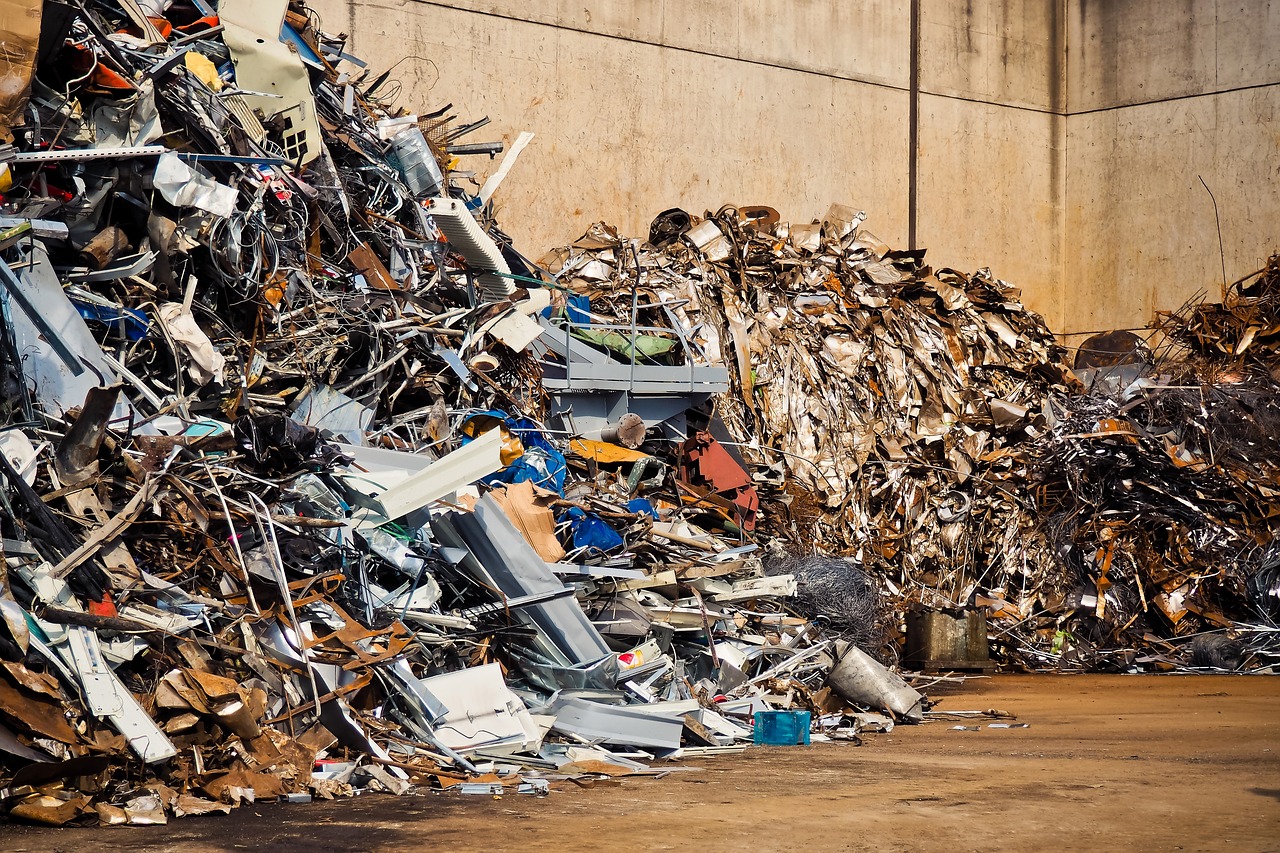
Cost Savings Through Recycling
When we think about recycling, we often focus on its environmental benefits, but let’s not overlook the economic advantages it brings to the table. Recycling can lead to significant cost savings for both communities and businesses. Imagine a world where trash doesn’t just pile up in landfills, but is transformed into valuable resources instead. This not only reduces the amount of waste we produce but also cuts down on the expenses associated with waste management.
One of the most compelling aspects of recycling is its ability to reduce waste disposal costs. Municipalities spend millions of dollars each year on waste collection and landfill fees. By increasing recycling rates, cities can divert waste from landfills, which translates into lower operational costs. For instance, a city that successfully implements a robust recycling program can see a substantial decrease in the volume of waste sent to landfills, which in turn reduces the need for new landfill sites and the associated costs of maintaining them.
Additionally, recycling conserves valuable raw materials, which can lead to lower production costs for manufacturers. When companies use recycled materials, they often save on the costs associated with extracting and processing virgin materials. For example, the recycling of aluminum can save up to 95% of the energy required to produce new aluminum from bauxite ore. This energy efficiency not only reduces costs but also lessens the environmental impact of production, creating a win-win situation.
Furthermore, recycling can stimulate local economies by creating jobs. The recycling industry is labor-intensive, requiring a workforce for collection, sorting, processing, and selling recycled materials. According to various studies, for every job in the waste management sector, recycling creates 1.17 to 1.17 jobs in the recycling sector, leading to more employment opportunities and economic growth.
To illustrate the potential savings, let’s take a look at a simple comparison of costs associated with recycling versus landfilling:
| Waste Management Method | Average Cost Per Ton |
|---|---|
| Landfilling | $50 - $100 |
| Recycling | $30 - $70 |
This table highlights that recycling is often less expensive than landfilling, making it an economically sound choice for waste management. By investing in recycling programs, communities not only save money but also contribute to a sustainable future.
In conclusion, the cost savings associated with recycling are undeniable. From reducing waste disposal fees to conserving raw materials and creating jobs, the economic benefits are substantial. So, the next time you toss that plastic bottle into the recycling bin, remember that you’re not just helping the environment; you’re also playing a part in a larger economic picture that favors sustainability and cost-effectiveness.
- What are the main economic benefits of recycling? Recycling reduces waste disposal costs, conserves natural resources, and creates jobs in the recycling sector.
- How does recycling save energy? Recycling processes often require less energy than producing new materials from raw resources, leading to significant energy savings.
- Can recycling help lower taxes? Yes, by reducing waste management costs, communities may save money that can be used to lower taxes or improve services.
Frequently Asked Questions
- Does recycling really help reduce pollution?
Absolutely! Recycling plays a significant role in lowering pollution levels. By processing and reusing materials, we reduce the need for new raw materials, which often involves energy-intensive extraction and manufacturing processes. This, in turn, leads to lower greenhouse gas emissions and less waste in landfills.
- What materials can be recycled?
Many common materials can be recycled, including plastics, metals, paper, and glass. Each type has its own recycling process and benefits. For instance, recycling aluminum cans saves 95% of the energy required to create new ones from raw materials, making it a fantastic way to conserve resources.
- Why is plastic recycling important?
Plastic recycling is crucial because plastic waste is one of the biggest environmental challenges we face today. By recycling plastics, we can reduce pollution and the demand for new plastic production, which is not only energy-intensive but also contributes to the depletion of natural resources.
- What challenges does plastic recycling face?
Plastic recycling is not without its hurdles. Contamination of recyclable materials and fluctuating market demand can significantly impact the effectiveness of recycling programs. It's essential to properly clean and sort plastics to ensure they are suitable for recycling.
- Are there any innovations in plastic recycling?
Yes! New technologies are being developed to improve the efficiency of plastic recycling. Innovations like advanced sorting systems and chemical recycling methods are helping to tackle some of the challenges and enhance the overall effectiveness of recycling efforts.
- How does metal recycling benefit the environment?
Metal recycling is beneficial because it conserves natural resources and reduces pollution. Recycling metals requires significantly less energy compared to producing new metals from ore, which leads to lower emissions and a smaller environmental footprint.
- What are the economic benefits of recycling?
Recycling offers several economic advantages, including job creation, reduced waste management costs, and resource conservation. By fostering a recycling industry, communities can stimulate local economies and create sustainable employment opportunities.
- How many jobs does the recycling industry create?
The recycling industry generates a wide range of jobs, from collection and sorting to processing and sales. These positions are vital for promoting sustainable practices and can significantly contribute to local economies.
- Can recycling save money for businesses and communities?
Yes! Recycling can lead to substantial cost savings by reducing waste disposal expenses and conserving resources. Organizations that implement recycling programs often find that they can lower their operational costs while also contributing to environmental sustainability.



















